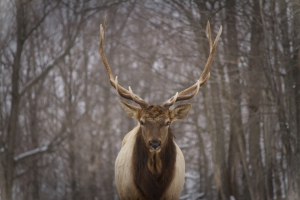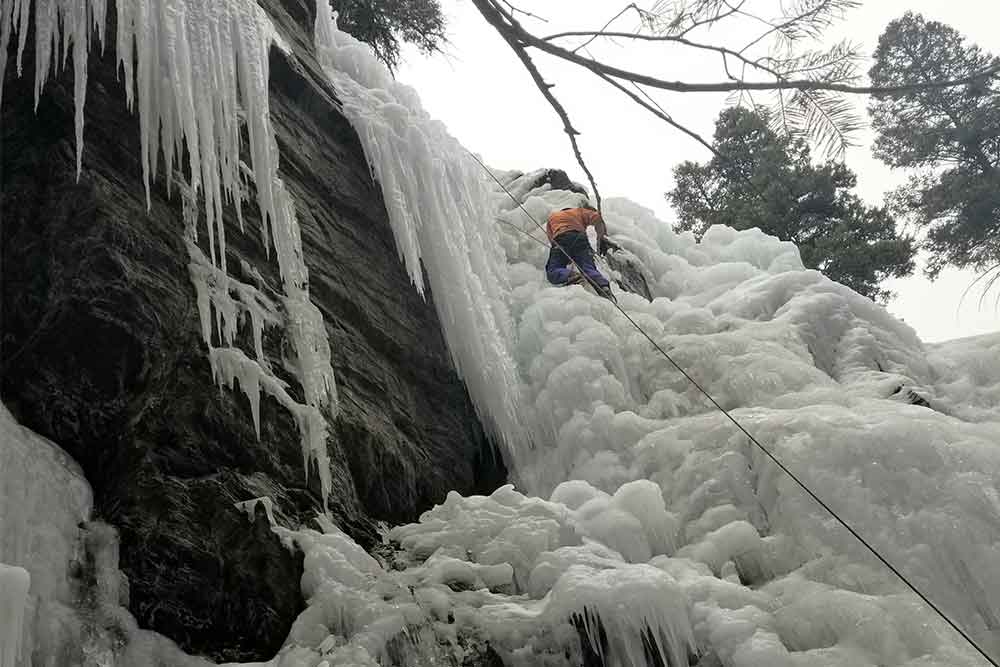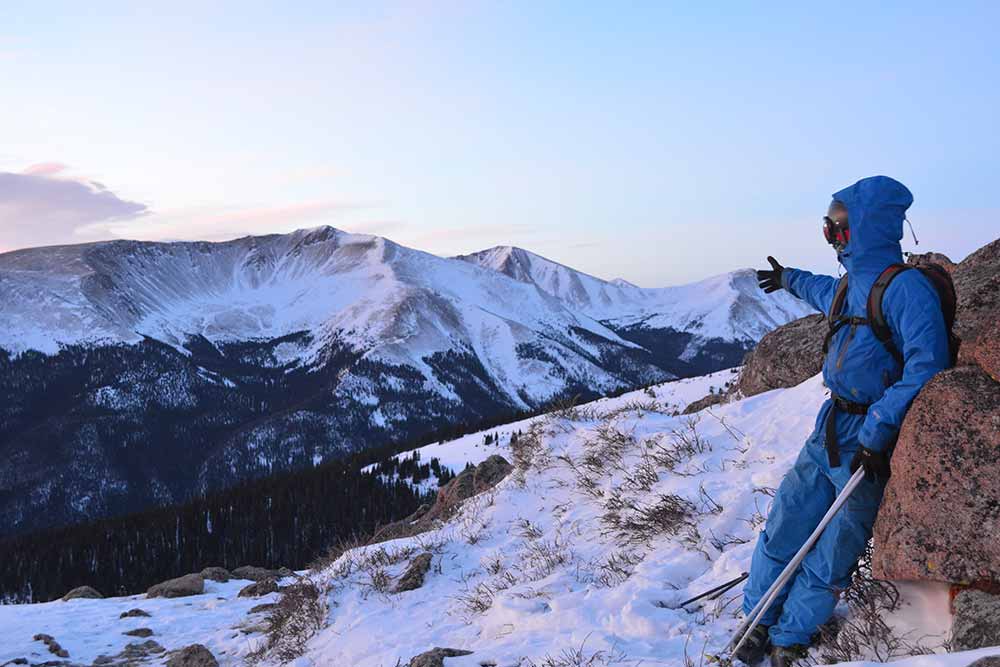Stay Fit with Elk Hunting in the Colorado Rockies

Hank Shell
Fall in Colorado’s Southern San Juan Range is a fickle and tempestuous season. The landscape undergoes a metamorphosis of color as the truncated days and cool nights set the once green collars of the mountains ablaze with orange leaves. Hoar frost supplants the morning dew on Alpine meadows of sedge and hairgrass, and the first snows cast a nacreous glaze over the rocky peaks.
Just as quickly as it sets the land alight, fall snuffs out the vivid display of autumn foliage, scaling the sere landscape with vast skeletal labyrinths of bare Aspen.
We modify our daily routines to accommodate the encroaching cold – out with the laissez-faire dress code of summer and in with wool coats, knitted hats and warm boots. And so, too, the mountain fauna prepares for winter.
Snowstorms drive herds of elk from their summer grazing lands in the Alpine tundra and sub-Alpine forests into the hills and valleys below. Bugling bull elk commence their eerie symphony of call and response as the rut arrives.
Beginning of Elk Hunting Season
The evenings and nights on the scrub oak mesa where I live come to life with the frantic, hormone-fueled music. It’s around this time that sportsmen around the state start sighting in their rifles and scouting their preferred hunting spots in preparation for elk season.
Though I fancy myself an avid outdoorsman, my hunting experience is limited to bird hunting in the Southeast where I grew up. Moving to Colorado, I knew it would only be a matter of time before I set my sights on larger game.
So it was with great enthusiasm that I accepted my roommate Tyler Lindell’s offer to accompany him on an elk hunt this October. Though I wouldn’t be doing any shooting myself, I planned to help clean and pack out any elk unfortunate enough to cross our path.
Elk hunting in Colorado is divided into six seasons. Archery season runs from late August to late September, muzzleloader season runs through the middle of September, and four back-to-back rifle seasons begin on Oct. 15.
Tyler, a six-year resident of Colorado, had originally scored an either-sex, first-season rifle tag – the holy grail of elk tags.
The either-sex tag means a hunter can take either a bull or cow, and elk can be rather complacent during the first season, as they’re not yet spooked by incessant rifle shots and hunter traffic in the backcountry. But an unplanned trip to Boston meant Tyler would have to trade his choice spot in line for a second-season bull tag. It would be a much more difficult hunt.
Related Article: Get Outside and Exercise – Your Immune System Will Thank You
Into the Hills
Tyler suggested we hunt the Beaver Creek area near the massif of Dunn, Middle and Dolores peaks, about 20 miles outside of Telluride, Colo. The hills beneath the massif include a smattering of pine forests, grassy meadows and large Aspen groves – all prime elk country.
As Tyler reckoned, warm weather we’d experienced in early October would push the elk a little higher into the flanks of the mountains. With a plan in place, we stuffed our packs, filled our water bottles and gorged ourselves on elk meat burritos before setting out in the wee hours of the morning, intent on filling our freezer.
A long and winding dirt road swept us upward, past roadside hunting camps still quiet in the pre-dawn darkness, and into the hills where we planned to hunt.
We pulled over on a quiet corner of the road where an old split-rail fence coursed upward into the forest. This looks as good as anything, Tyler said. Exchanging nervous grins, we stepped out into the dark and frigid morning, shouldered our packs and walked into the woods.
Silence: the Name of the Game
We hoped to get well up into the high meadows before sunrise. Tyler and I slowly made our way through the thick underbrush, taking care not to step heavily, lest we spook any nearby elk. It proved harder than I anticipated.
The silent forest seems to amplify every swishing branch and cracking twig with a deafening ferocity.
I winced with every snap underfoot, but Tyler was a patient teacher, turning only a couple times to signal me with a finger to the lips. Still, it was slow going. The frost made the fallen Aspen leaves crackle like sparklers beneath my boots, and I moved with the sedate caution of a stalking heron.
It wasn’t long before we started encountering elk sign. Fresh scat and tracks appeared with growing frequency as we ascended the wooded hillside, and soon the musky smell of elk hung thick in the air. Tyler turned and pointed to his nose, signaling that we were getting close. I felt my heart race faster as I visualized the impending encounter and shot.
Soon we emerged at the edge of a small meadow, the stench of elk filling our nostrils. We’re almost on them, I thought, as Tyler made his way slowly into the meadow. They were probably in the dark timber along the meadow’s far edge.
Suddenly, a rifle shot rang out in the distance. The crashing of branches and bodies erupted from the far timber as the elk we were stalking spooked. Just like that, they were gone.
Related Article: Off Season Ski Conditioning

The Long Haul
Though the ground was thick with elk spoor, we didn’t encounter any animals for the rest of the day. After a fruitless evening hunt, we made our way back to the car and set up camp in a meadow.
We spent the night drinking beer, playing music, and story telling before settling down into our sleeping bags, intent on covering a lot of ground during the next day’s hunt.
Hunters employ different strategies when pursuing Elk, whether it’s chasing bugles, settling down near a heavily trafficked area or simply roaming the hills in search of a herd. With the rut winding down and few bugles penetrating the thick forest, Tyler and I decided to employ the third tactic.
Our second day of hunting saw us move some 15 miles through the mountain forest, scouting meadows, following the ubiquitous “elk highways” that lace the forest floor and listening intently for any sound that might betray a nearby herd.
Because elk are found at high elevations in the Rocky Mountains, training is an important part of prepping for an elk hunt. Hiking and running in preparation for elk season is a good strategy for getting into shape. Hunters visiting from lower elevations will benefit from a couple of days of pre-hunt acclimatization.
It’s also important to be prepared for any backcountry emergency; carry ample water and supplies, including a first aid kit. A GPS and radios are also useful for navigating the woods.
Savor the Experience
Though we were intent on bagging a big bull, Tyler and I emerged from the woods four days after we’d entered with naught but tired legs and empty packs. Though elk sign was plentiful, and we’d caught a whiff of them on a few more occasions, the sound of fleeing elk crashing through the underbrush on the first day was the closest we would get to seeing one.
When you spend days slogging through the woods and have nothing to show for it, it’s easy to let the post-hunt blues sour your experience. In light of this, it’s important to remember to appreciate the opportunity to get outside. While somewhat disappointed, I found that savoring the outdoor experience helped ameliorate any chagrin from the unsuccessful hunt.
Soak in the views, smells and sounds of the forest, recognize the value in getting a little fresh air and exercise, and remember, there’s always next season.
Related Article: Stay in Shape for the Long Haul
If You Go
Elk hunting in Colorado is a thrilling experience for any hunter. For up to date information on regulations or to purchase an Elk tag, visit www.cpw.state.co.us.
You Might Like:
















